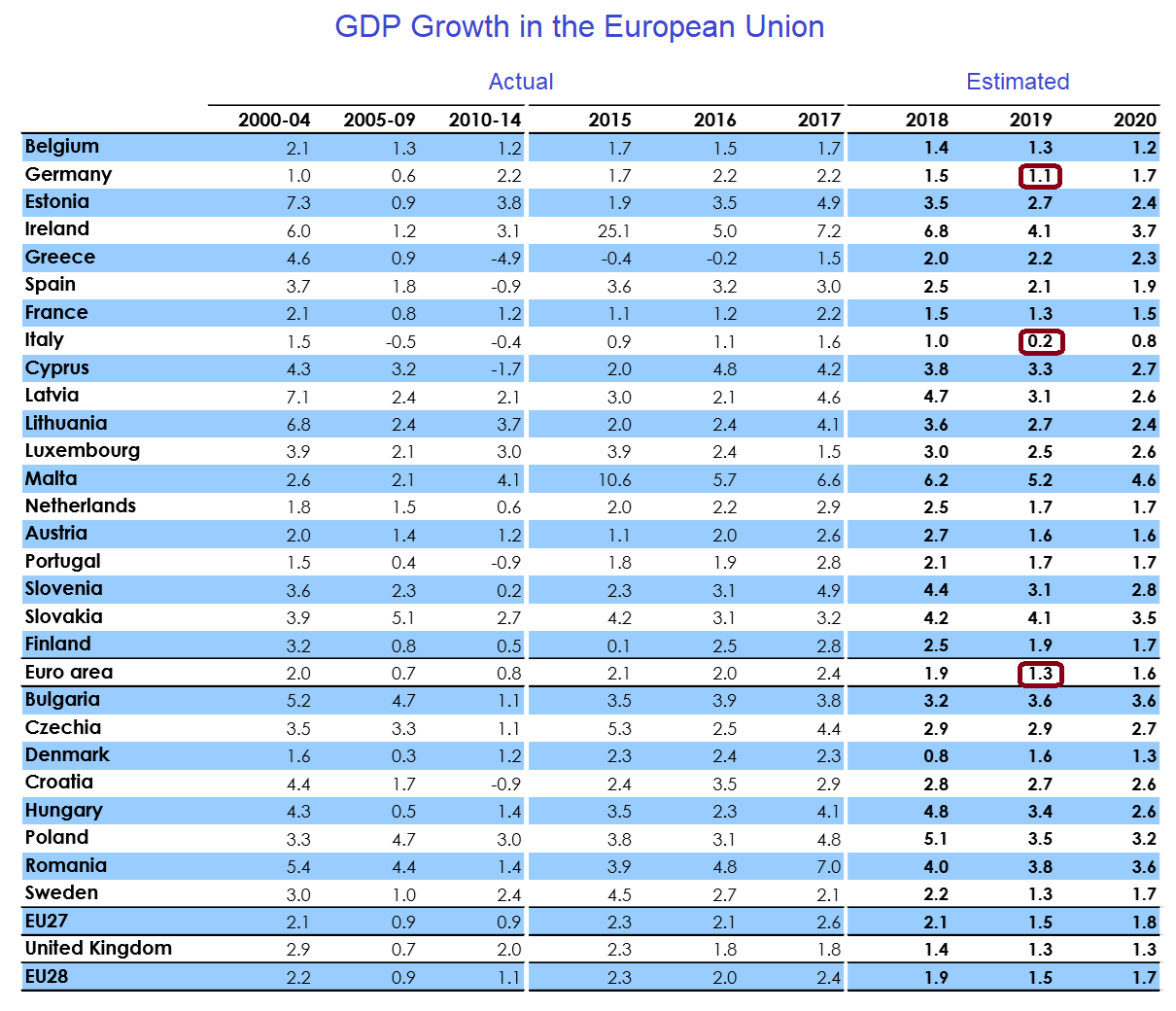The European Commission slashed their GDP growth forecast for the European Union (excluding the United Kingdom) and the Eurozone for 2019 and 2020 citing slowing growth in China and weakening global trade.
The growth forecast for 2019 for the European Union (excluding the United Kingdom) was cut to 1.5% for 2019 (was previously forecast 2%) and for the Eurozone was cut to 1.3% (was previously forecast 1.9%).
Germany, Italy and the Netherlands all saw big downgrades for their growth outlook.

The European Commission expects German growth to be only 1.1% in 2019 due to weakening export growth and growing consumer restraint. Destatis – the German statistical office said last month that the country grew at a rate of 1.5% in 2018, compared to 2.2% in 2017, this was the weakest growth rate since 2013. German industrial production declined 0.4% in December, the fourth consecutive monthly fall.
The European Commission also slashed its economic growth forecast for Italy for 2019 to just 0.2% due to uncertainty over government policies and higher borrowing costs. Italy is already in a technical recession.
Bank of England UK growth forecast
The Bank of England expects GDP growth in the United Kingdom in 2019 to be 1.2%, it had previously (in November 2018) forecast growth of 1.7%.
The 2019 forecast is the lowest GDP is the slowest since 2009 when the UK entered a recession. The Bank of England blames mounting Brexit uncertainty and a global slowdown for lower economic growth.
The UK is expected to grow quicker than Germany in 2019
Both the Bank of England and the European Commission forecast GDP growth for the United Kingdom in 2019 to be more than that of Germany, despite Brexit.
Related:
Past, present, future – some demographic and economic statistics for the European Union
Parts of the European Union have seen nominal GDP per capita fall between 2007 and 2017
Europe’s aging population is set to cause huge economic challenges
The Eurozone or Euro area (EA) currently includes Belgium, Germany, Estonia, Ireland, Greece, Spain, France, Italy, Cyprus, Latvia, Lithuania, Luxembourg, Malta, the Netherlands, Austria, Portugal, Slovenia, Slovakia and Finland.
The European Union (EU) currently includes Belgium, Bulgaria, Czechia (formerly the Czech Republic), Denmark, Germany, Estonia, Ireland, Greece, Spain, France, Croatia, Italy, Cyprus, Latvia, Lithuania, Luxembourg, Hungary, Malta, the Netherlands, Austria, Poland, Portugal, Romania, Slovenia, Slovakia, Finland, Sweden and the United Kingdom.